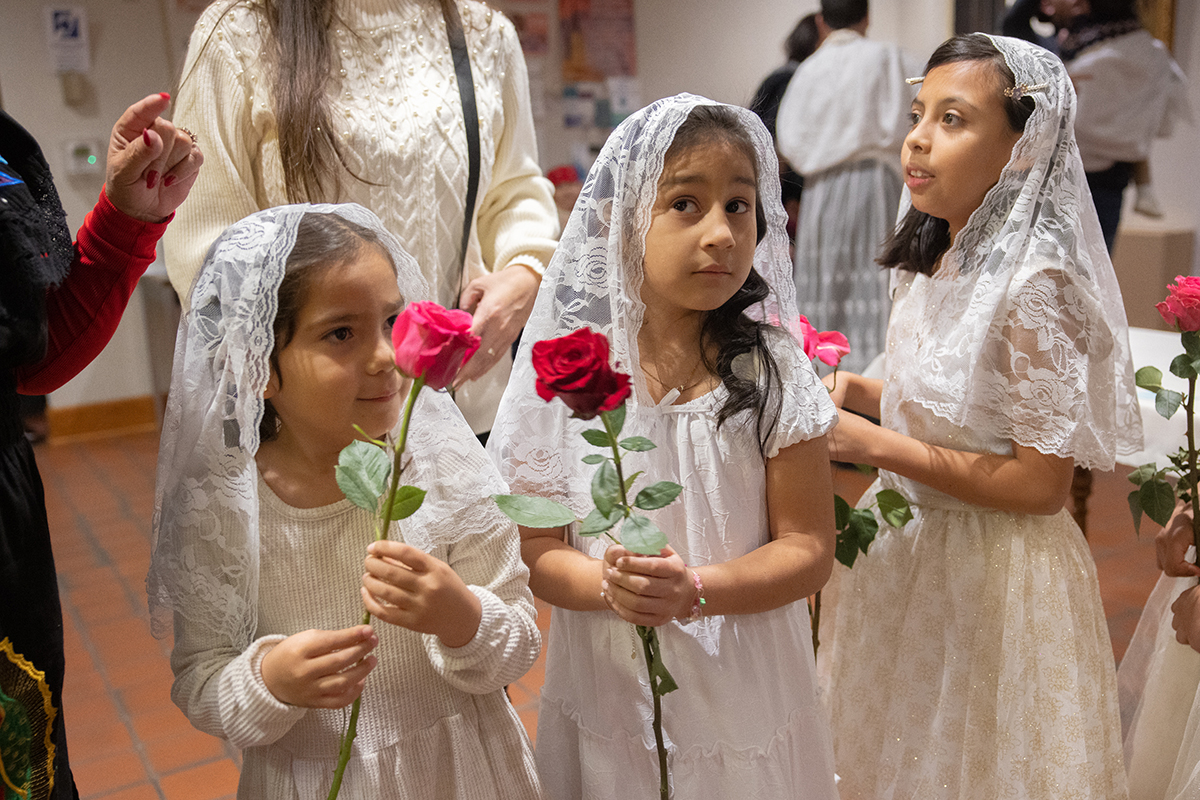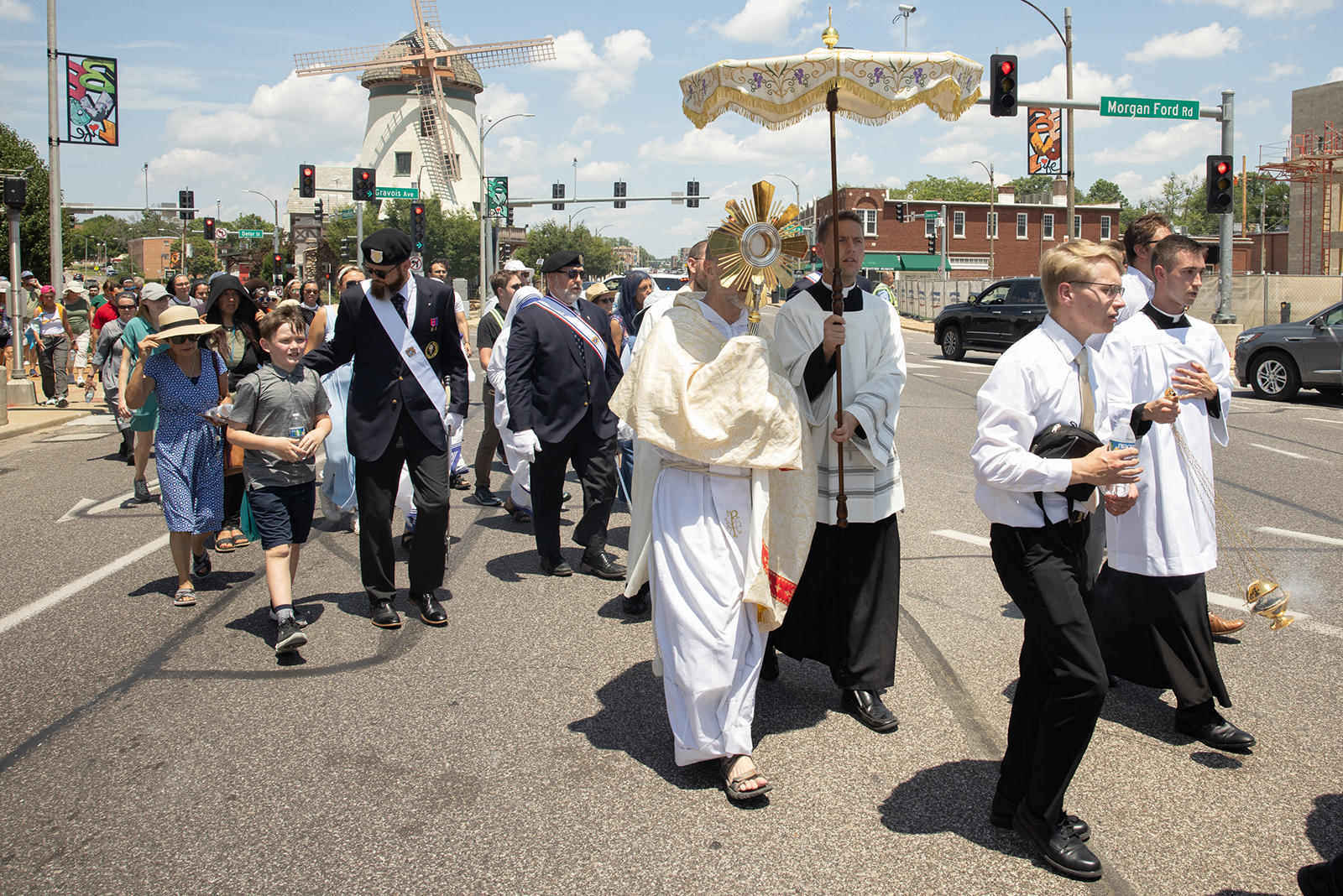On mission to lead people to encounter Jesus in the Eucharist

For the third year of the Eucharistic Revival, Catholics are encouraged to walk with one person as God invites them deeper
When the National Eucharistic Revival’s Year of the Parish began a year ago, Jill Soderquist jumped right in.
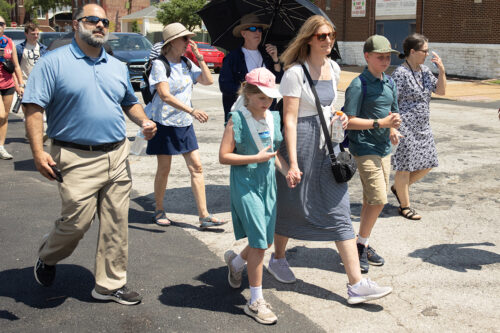
Jill and the eucharistic revival committee at St. Mark Parish in Lemay crafted a full lineup of activities to foster devotion to the Eucharist, including an exhibit and presentation on eucharistic miracles; a family Advent gathering; a seven-week parish study, “Jesus and the Eucharist,” offered through the Augustine Institute; and weekly eucharistic adoration at the parish.
It wasn’t long ago that she struggled to appreciate the Eucharist, which the Catechism of the Catholic Church describes as “the heart and the summit of the Church’s life.”
A lifelong Catholic, Jill knew about the Eucharist and the importance the Church places upon it. But it wasn’t until a few years ago that “God gave me the head-to-heart knowledge that the Eucharist was really Jesus,” she said. She experienced an encounter after listening to a recorded talk from Father Mike Schmitz on his experiences with the Eucharist and the intimacy that the Lord offers us through His eucharistic presence.
In the talk, Father Schmitz dove into the Bread of Life discourse in the Gospel of John, chapter 6. “I had never heard it put that way before,” Jill said, “the number of times Jesus says you must eat my body if you want to have life. It really opened up my eyes and sent me down a path to look more into the Eucharist.”
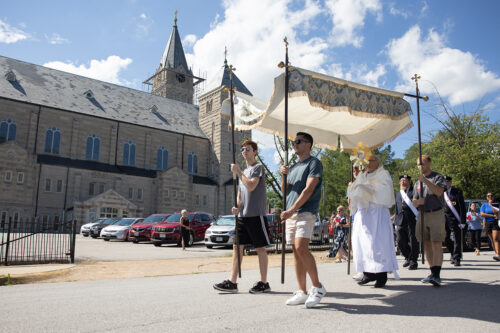
That eventually led her to attend daily Mass. “I thought, this is really Jesus. I knew it, but now I really know it. When you start receiving Jesus and really realizing it’s Jesus, you want to keep going. Daily Mass becomes something you need to do. I went to adoration once or twice in high school but didn’t start earnestly going until that point. I feel homesick when I miss it.”
Jill’s personal encounter with the Eucharist led her to become involved in the Eucharistic Revival’s parish year. The U.S. bishops launched the three-year National Eucharistic Revival in June 2022 to inspire a deeper love for Jesus in the Eucharist. The first year was focused on renewal at the diocesan level.
The final year, the Year of the National Eucharistic Congress and Missionary Sending, was highlighted by the 10th National Eucharistic Congress in July in Indianapolis and focused on each person’s call to bring Jesus to others. Jill was among several hundred people from the Archdiocese of St. Louis who attended the congress July 17-21.

Jill said she prayed for an outpouring of the Holy Spirit at the congress to inspire people to spread devotion to the Eucharist. A 2022 national survey from the Center for Applied Research in the Apostolate (CARA) shows that while 64 percent of respondents indicated they believe in the Real Presence of Jesus in the Eucharist, only 17 percent of adult Catholics surveyed attend Mass at least once weekly.
See stlreview.com/3FfOniB to read the study.
“I am really hoping that the Holy Spirit will take the lead here and guide the Church on those next steps,” Jill said. “This whole year of parish revival, all of the activities and programs that we’ve put in place to bring parishioners closer to the Eucharist, it’s been likened to kindling. I feel that we’ll be giving ourselves over to the Holy Spirit to take the lead and show us how God wants us to bring souls to Jesus, much like the first apostles. What that looks like, only time will tell. But I really believe He’s going to do something amazing.”
Sent on mission
As Catholics follow the Holy Spirit’s invitation to return to the source and summit of our faith, the third and final year of the National Eucharistic Revival can be summed up by one word: mission.
“That’s ultimately always been the goal of the Eucharistic Revival: to participate in the missionary conversion of the Church,” said Tim Glemkowski, outgoing CEO of the National Eucharistic Revival Inc. “The Church has to be transformed in a missionary way, at every level, every institution. All of our mindsets, our ways of operating, need to be that of missionaries in an apostolic time. The ultimate purpose of the Eucharistic Revival has always found itself situated in that generational project that’s in front of the Church right now.”

The Eucharistic Revival has invited people into an encounter with Jesus in the Eucharist, which creates conversion and prepares them to be sent out as missionaries to bear fruit, Tim said. “And that fruitfulness will ultimately come from sacrifice, from the willingness to lay one’s life down and pour oneself out the way Jesus does in the Eucharist.”
During this year, the U.S. bishops invite every Catholic to “walk with one,” he said.
“In light of your encounter with Jesus in the Eucharist that changes your life, you are now being invited not to go solve every problem in the world right now, or start a new organization — you’re being invited to walk with one person as God is bringing them deeper into His own divine life,” he said.
If the millions of Catholics across the country can adopt that call, we’ll see “a generational impact” follow, Tim said.
“The Church is converted to mission when we, as disciples, are,” he said. “It’s not the Church that evangelizes as an institution, but each of us individually in our neighborhoods and communities and businesses. To send missionary disciples is really the way that the missionary activity and conversion of the Church has always happened.”
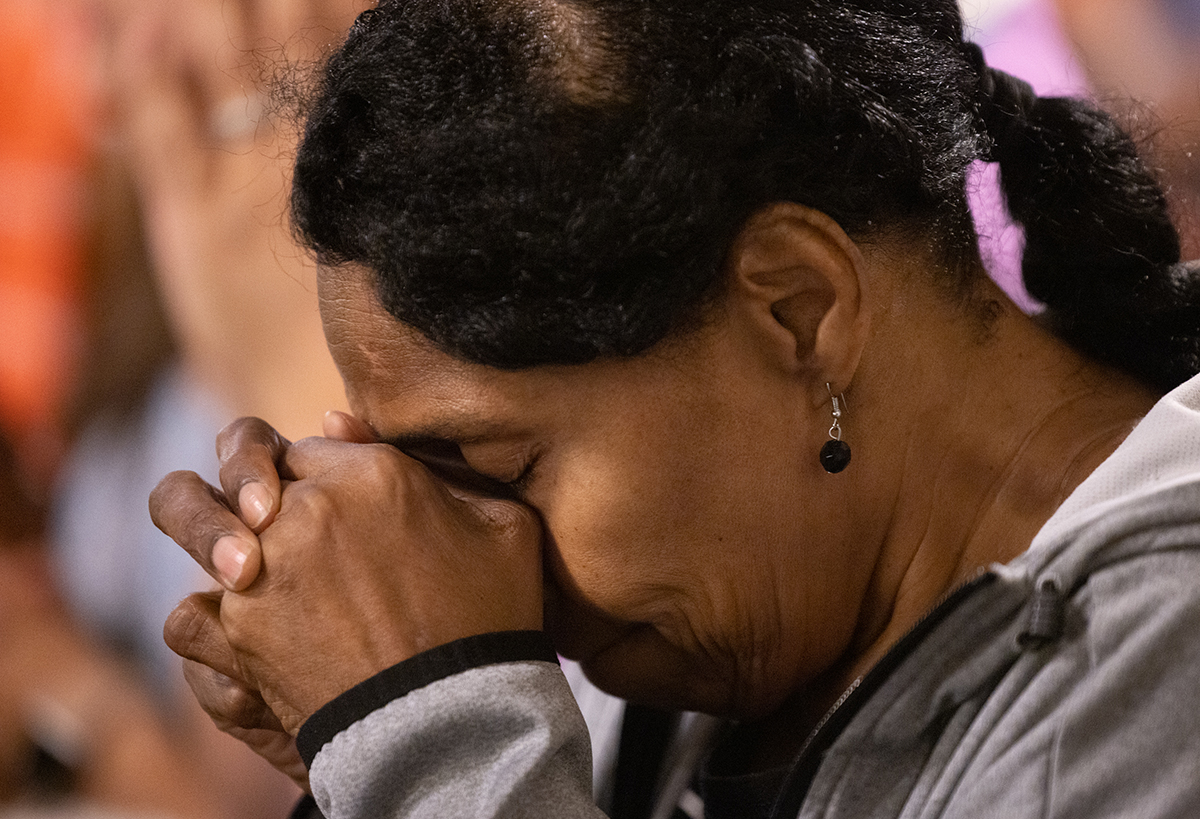
Leading others to the Eucharist
Here are several tips for fostering a devotion to the Eucharist and how you can share that with others.
Start at home: Create a space in your home that fosters prayer. Examples include a prayer corner with a chair for reading, a small table set up with devotionals or Catholic art.
Be open to conversations: When someone brings up the topic of the Church, be prepared to talk about why the Mass and the Eucharist is important to you. Be open to being vulnerable in sharing your own hurdles in faith and how you’ve worked through them. Follow up with Catholic resources if you need help.
Share your story: One of the most powerful ways to introduce someone to Jesus is by sharing what He has done in your life. Craft your testimony in a way that could be shared in a couple of minutes.
Meet Jesus in Scripture: Read and talk about what Jesus did and said. Practice Lectio Divina, a practice that involves reading Scripture several times and focusing on different words and phrases at each reading.
Allow time for silence: We’re often overwhelmed with the noise of television, music and social media. Encourage times for silence to listen to God’s voice in their hearts.
Serve others: Through service, we have the opportunity to see the face of Christ in others. That could be as simple as inviting an elderly neighbor over for dinner or doing something for a sick family member or friend. Volunteer at a homeless shelter or soup kitchen.
More resources to help spread a devotion to the Eucharist are available at the National Eucharistic Revival website: www.eucharisticrevival.org/revival-resources
The Real Presence in the Eucharist
The term transubstantiation is used when bread and wine become the Body and Blood of Jesus. They do not become symbols of the Body and Blood; they become the actual Body and Blood of Jesus.

Different types of changes occur, even though our senses have not seen any change. For example, if a piece of paper is torn, it has changed. It’s still paper, but the appearance has changed. Some changes occur that can’t be seen. For example, when you learn something new, a change has occurred inside you, but it can’t be seen on the outside. You remain the same person as before.
When bread and wine are changed into the Body and Blood of Christ, they change completely; their substance changes and they become Jesus, truly present. However, the appearances do not change; they still appear as bread and wine.
Church teaching on the Eucharist
The Church describes the Eucharist as the “source and summit” of our Catholic faith. The Catechism of the Catholic Church explains that “the Holy Eucharist completes Christian initiation. The Eucharist is the heart and the summit of the Church’s life, for in it Christ associates His Church and all Her members with His sacrifice of praise and thanksgiving offered once for all on the cross to his Father; by this sacrifice He pours out the graces of salvation on His Body which is the Church.” (CCC 1322, 1407)
Pope Francis has described Communion as the “sacrament of love.”
“Together with baptism and confirmation, it constitutes the source of the Church’s life itself,” the pope said. “From this sacrament of love, in fact, flows every authentic journey of faith, of communion, and of witness.”
Our understanding of the Real Presence of Jesus in the Eucharist traces back to the early Church. There are numerous references in Scripture, including when Jesus told His disciples: “I am the living bread which came down from heaven … if anyone eats this bread, he will live forever … I say to you, unless you eat the flesh of the Son of man and drink His blood, you have no life in you; he who eats my flesh and drinks my blood abides in me, and I in him. …” (John 6:25-58).


